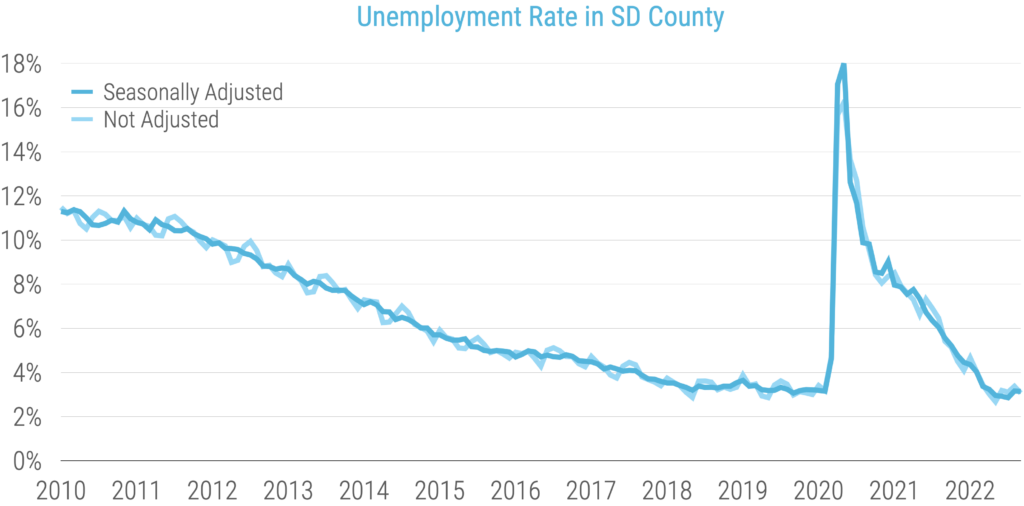Workforce Partnership chief economist Daniel Enemark analyzes September’s labor market trends.
Another month of extraordinarily low unemployment
Unemployment edged down last month, putting San Diego at a very low 3.1%. For context, in this century—273 months so far—we’ve only had seven months with an unemployment as low as last month’s rate. Compare this to 3.7% across California, 3.3% nationwide, 3.4% last month in San Diego and 5.4% this time last year in San Diego.
“It’s always good to see employment grow in September,” noted Phil Blair, executive officer of Manpower San Diego. And indeed, civilian employment has increased every September for the last 12 years. A big contribution to that pattern is the hiring of teachers for the beginning of the school year. Local Government Education added 5,300 jobs last month, and Colleges, Universities & Professional Schools, State Government Education, and Educational Services together added another 5,000.

Continued low unemployment is mixed news
Low unemployment is generally great for job security and job seeking: employers are struggling to hire and qualified workers have a lot of power on the job market. There are more jobs than job seekers right now (1.7 openings for every unemployed American). While the labor market is usually like a game of musical chairs, with workers competing over a limited number of opportunities, right now the chairs are competing for butts. Many job seekers find they can afford to be picky about the opportunities they consider and the wages they accept. And employers who know they’ll struggle to fill unfilled positions are highly motivated to retain their current workforce.
On the other hand, it’s not great news for inflation and the economy. In the short run, without intervention, low unemployment usually contributes to higher inflation. Continued very-low unemployment at the national level will likely encourage the federal reserve to continue their sharp interest rate increases to combat inflation, and those actions will increase unemployment and the likelihood of a recession. It’s worth mentioning though that wages have not been the primary driver of inflation since the pandemic. The housing shortage, global supply chain issues, Russian’s invasion of Ukraine and most recently OPEC+’s decision to cut oil production have created an environment where high inflation is high around the globe.
Growing the labor force in San Diego would relax the tight labor market, help employers recruit talent and expand prosperity to more workers. Three things we could do to grow San Diego’s labor force would be to make San Diego more affordable for workers by building more housing, bring in more workers through immigration and encourage parents to work by providing affordable childcare. San Diego has long had an unusually low labor force participation rate among women; access to childcare could allow tens of thousands of mothers to rejoin the workforce. Learn more about childcare in San Diego and how it impacts our economy.
